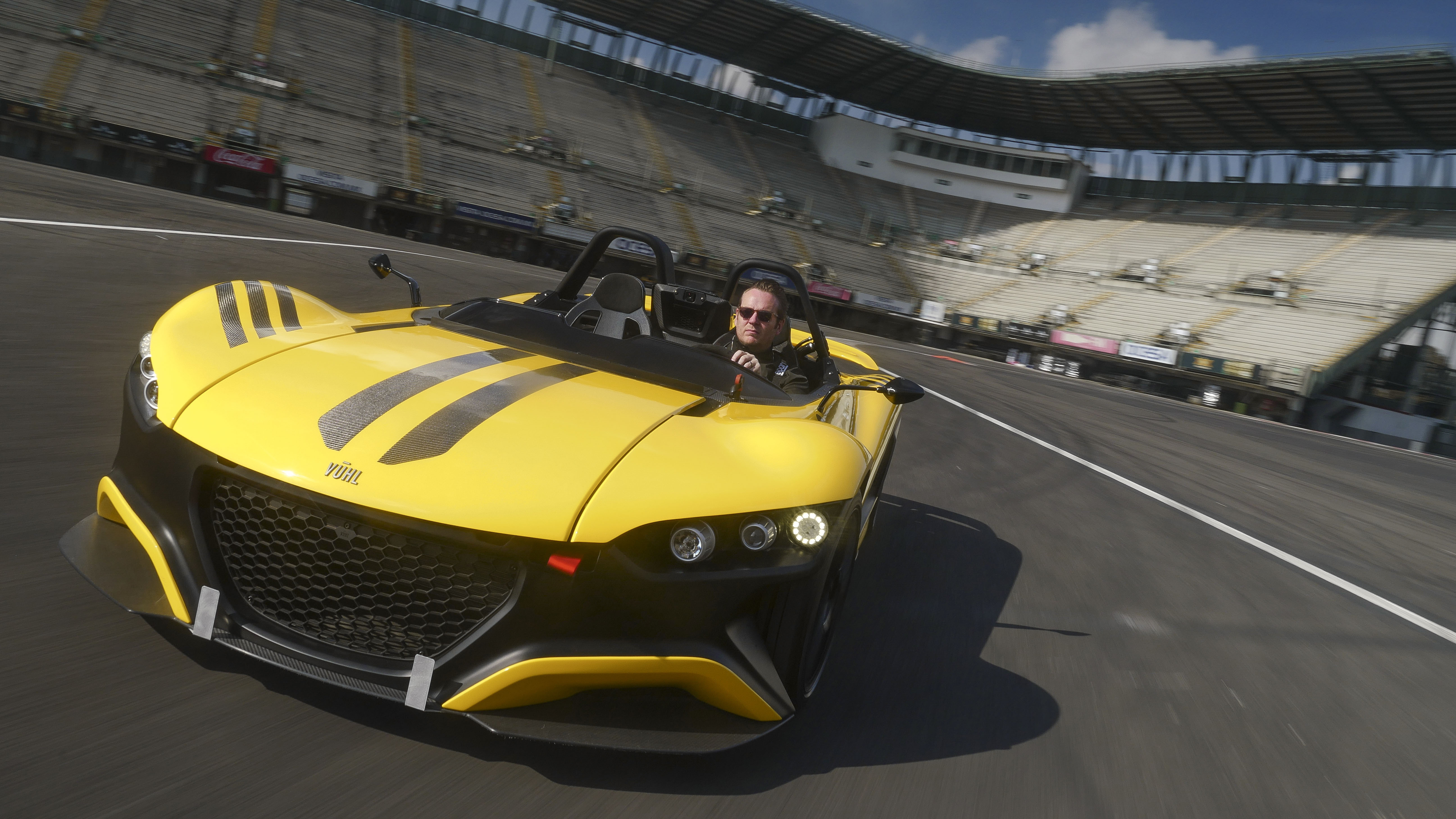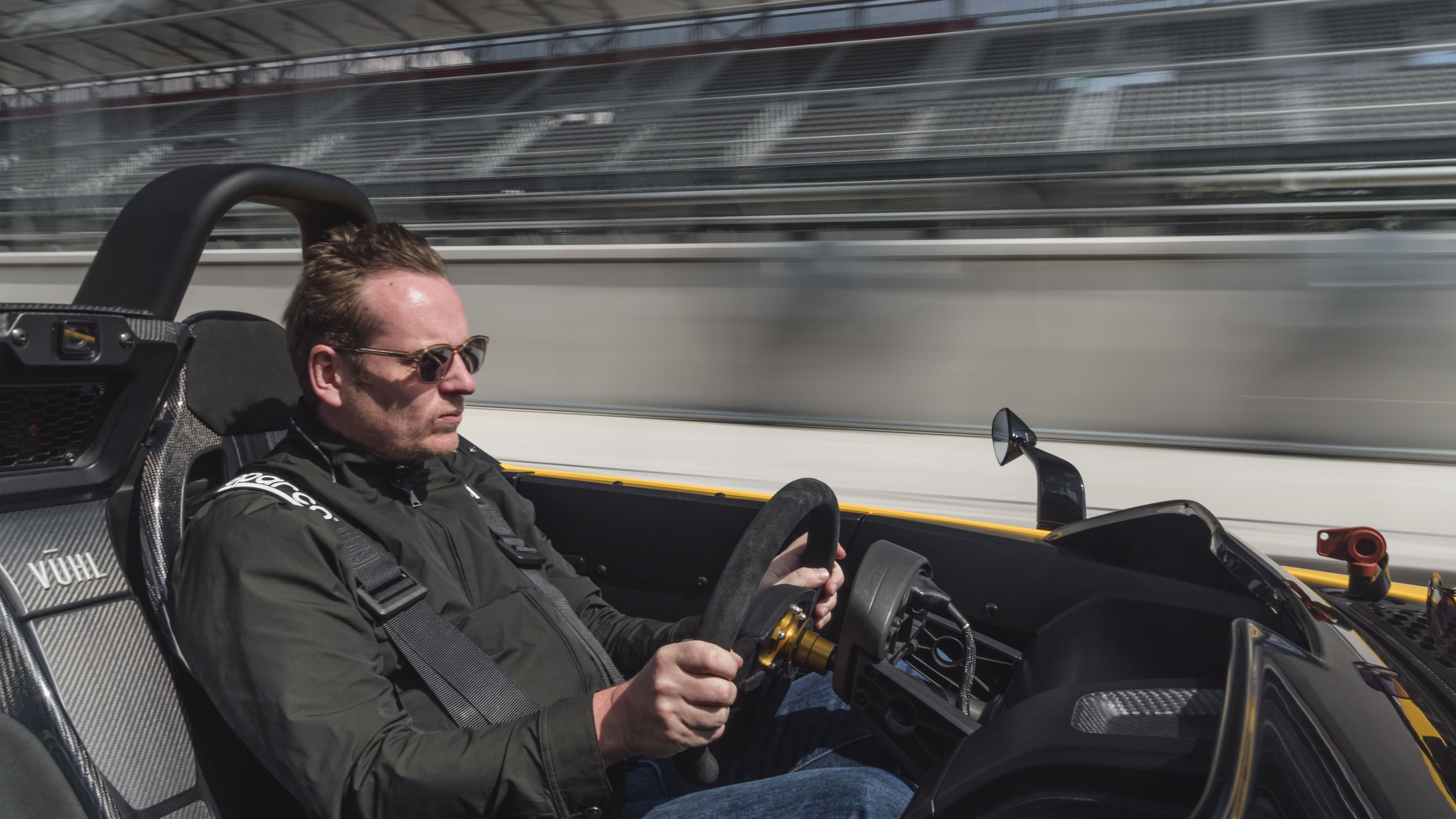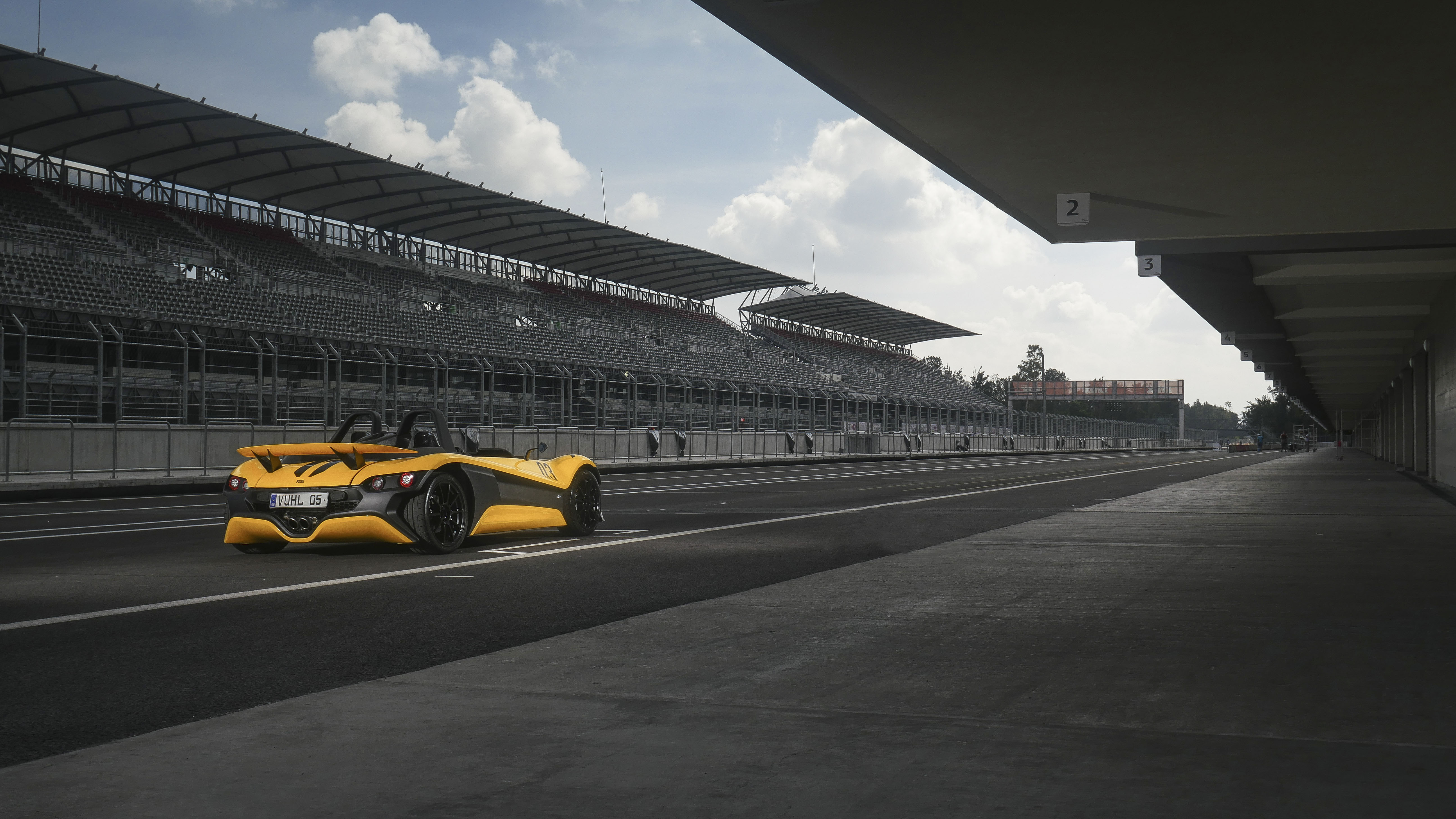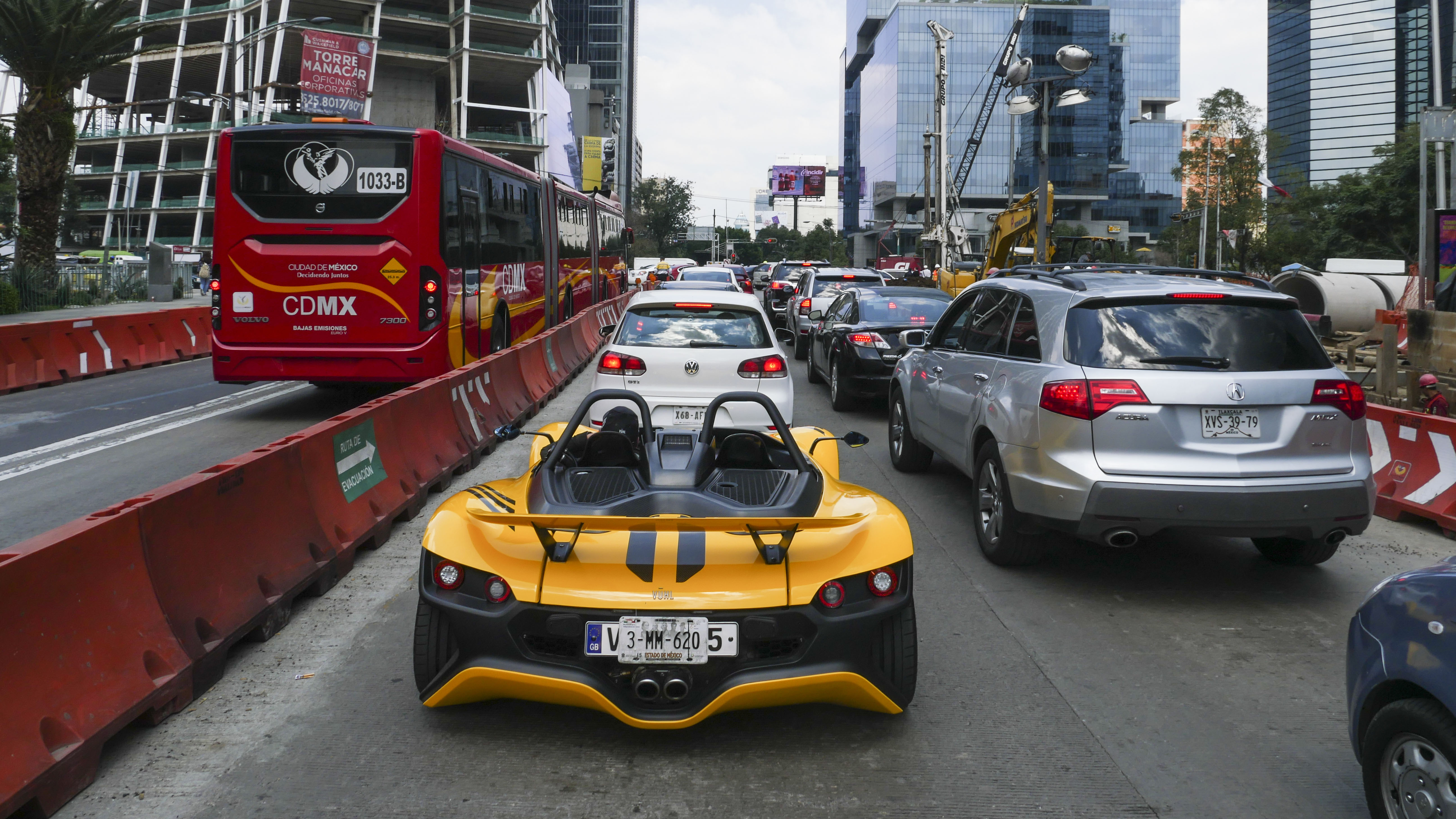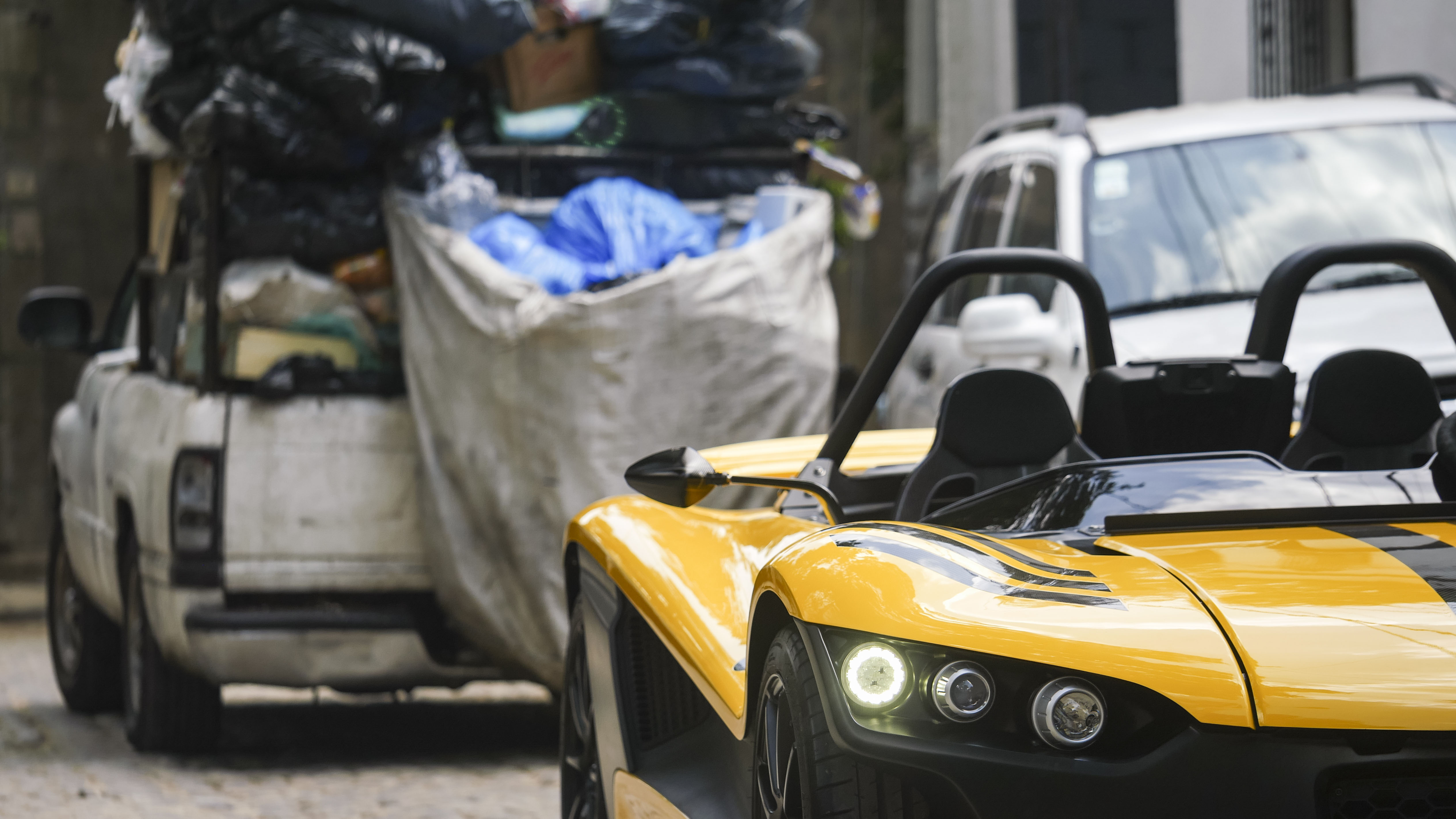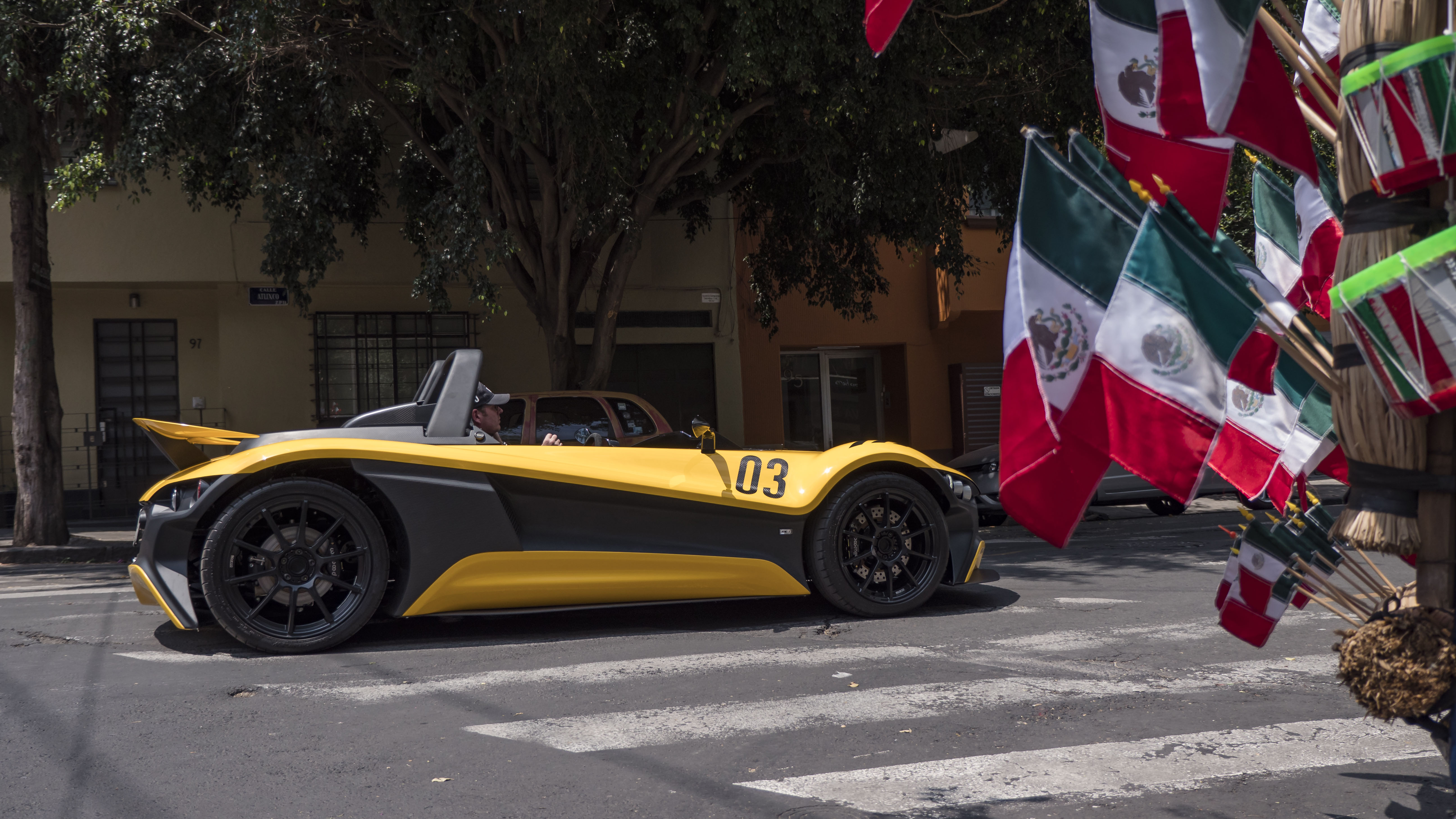
The Vuhl 05 vs Mexico City
TG goes on a voyage of discovery in a 285bhp roofless Mexican sportscar
Mexico. We’re currently in a restaurant carved out of an enormous cave on the edge of Teotihuacan, an ancient Mesoamerican site first uncovered in 1905 that spans 32 square miles. There are two vast pyramids here – the Pyramid of the Moon, and the Pyramid of the Sun – and a huge temple (one of 18, in fact; amazingly, only 20 per cent of the site has been uncovered).
Carbon dating suggests that the city goes back as far as 400BC, and was once home to 200,000 people. Although they worshipped the elements, and accorded great status to the serpent and the jaguar, there’s a stunning geometry to the structures here which bespeaks of an intelligence rather higher than the one that was occupying the British Isles at the time (stone circles were the best we could manage). It also gives the place some seriously spooky natural acoustics.
"Clap your hands", my guide Tonatiuh (aka Gorilla) says. The sound reverberates off all four corners with crystal clarity. (Later, we’ll sit in a cave and burn some seeds from the copaleo tree to give thanks to the Gods. Gorilla has done this with Bono, Sting, David Bowie and Bryan Adams… they could have held Live Aid down here.)
The point is: this is one of the coolest places on Earth. Fast forward 24 hours and we’re at the Autódromo Hermanos Rodríguez, recently restored home of the Mexican Grand Prix, sitting in the perhaps unexpectedly well-engineered cockpit of the Vuhl. What a place this is. The track is an engine-punishing 2,240m above sea level (7,340ft) for a start, and weaves its way for 4.3km through a park that will feel familiar to anyone who’s been to Monza (although the surrounding area is rather less grand than Milan’s royal park).
Words: Jason Barlow
Photos: Hector Manon
The circuit itself makes up in history what it lacks in glamour compared to its European compadrés. Younger motor racing fans might not be so familiar with Ricardo and Pedro Rodríguez, the Mexican brothers who arrived like comets into the sport in the early 1960s, and whom the track’s name rightly honours. F1 is a kindergarten these days, but when Ricardo Rodriguez raced for Ferrari in 1961, he was just 19. Unheard-of, back then. A circuit was duly created in the Magdalena Mixhuca park in 1962, but before Ricardo could race in F1 proper there, he was killed during practice at the wheel of Rob Walker’s Lotus 24, in one of the non-championship races that were common at the time. Fast but notoriously fragile, the Lotus’s rear suspension had collapsed. He was only 20.
His brother Pedro continued racing, and made his second appearance in F1 in the 1963 Mexican GP, also in a Lotus. He’d already raced a Ferrari 500 TR at Le Mans, as early as 1958 when he was just 18, and would race there 14 times in all, most successfully co-driving a Ford GT40 to victory in 1968 with Lucien Bianchi.
One of the greatest-ever sports car racers, Rodríguez was closely associated with two of the era’s most iconic names – Luigi Chinetti’s NART Ferrari squad (for whom he raced the 250 GTO, amongst other famous Ferraris), and John Wyer’s Gulf-sponsored Porsche team, with whom he won the 24 Hours of Daytona, and endurance races at Monza and Spa. The 250 GTO and 917: jammy git.
The 05 is a sensational looking thing whose swoops and ducts keep yielding thrilling visual information the more you examine it
Rodriguez also had supernatural wet-weather skills, and his performance in the BOAC 1000km of Brands Hatch is still regarded by many as one of the greatest drives of all. Pedro drove 197 of the race’s 235 laps, and his win – by a five-lap margin after seven hours – prompted rival driver Chris Amon to say, "Why doesn’t someone tell Pedro it’s raining?" The great man was killed during a race in Germany in July 1971. Those boys weren’t around long, but they sure left their mark.
They’re setting up for a Roger Waters gig while we’re here, so a full lap of the track isn’t on the cards. But even just using the stadium section, it’s obvious the Vuhl is no opportunistic Pedro-in-a-shed lash-up from the get-go. Actually, having met Iker and Guillermo Echeverria during the Goodwood FOS a few years ago I knew this already. Their background is in industrial design – similar to BAC’s Briggs’ brothers – and there’s an intelligence to the Vuhl’s concept and execution that really is a cut above. Plus, they’re funny and engaging guys. Turns out that their father was a successful GT racer in the 1970s, and won a few championships in a Lotus Europa.
Like the British Mono, the Mexican 05 is a sensational looking thing whose swoops and ducts keep yielding thrilling visual information the more you examine it.
Top Gear
Newsletter
Thank you for subscribing to our newsletter. Look out for your regular round-up of news, reviews and offers in your inbox.
Get all the latest news, reviews and exclusives, direct to your inbox.

The configuration isn’t new: a 2.0-litre Ford Ecoboost engine making 285bhp sits in the middle of a bonded and riveted aluminium tub, harnessed to a six-speed manual box, also from Ford. The outer panels are fibreglass, but you can have them in carbonfibre. The suspension uses double wishbones at both ends, and the dampers are fully adjustable.
Although they’re based in a hangar alongside Airbus and Bombardier in Mexico’s Queretaro Airport, the car is actually something of an international effort. It was designed in Italy, Magna co-developed the chassis, Lotus worked on the suspension, Canadian specialist Multimatic is involved, and Michelin worked with them on the tyres. So there is pedigree here. "We build up the cars in bays that look just like the ones in F1," Iker tells me. "Being in the aerospace environment is pushing us further, but that’s what we want, where we need to be."
The Vuhl 05, Iker concedes, is a deliberately more compliant proposition. Mexico’s poorly surfaced roads – they’re almost as bad as the UK’s – means that the car has an unusually generous 110mm of ground clearance. But at just shy of 700kg all-up, the 400bhp-per-tonne power-to-weight ratio is enough to be getting on with, especially as we prepare to tackle the notorious traffic of Mexico City. (The Vuhl R has 600bhp-per-tonne, a Sadev sequential ’box, and a more track-oriented chassis set-up. One for another day.)
TG has already tested the Vuhl on a track, so we know it delivers, definitely in terms of performance – 0-62mph in 3.7 seconds – traction, and overall balance, if not as the ultimate, telepathic track day weapon. "If you want a lightweight car for darting through cities, this is the one to have," to quote TG’s in-house ‘hand’ Ollie Marriage.
Today, this is good news, and a certain amount of darting is achieved. But the city’s reputation as the ne plus ultra of traffic-addled megalopolises is well-founded. Approximately 22 million people live in Greater Mexico City, and there are 3.5 million cars on the move during peak periods. Well, sort of on the move. Coming into land at the airport, you spend longer passing over the urban sprawl than even final approach into Los Angeles serves up. It goes on forever, an undulating patchwork of concrete and high rises, enlivened by clumps of brightly coloured shanty towns.
At ground level, this metastasizes into such an afflicted, dysfunctional traffic flow it makes London look like a walk in the park. In these circumstances, the Vuhl’s lightweight clutch and controls – not to mention its awesome visibility – are all greatly appreciated. It also means conversation is freely had. "Is that a Ferrari?" someone asks. Flattering. A busload of schoolkids goes crazy. A street vendor tries to sell me something called chicharrones, a corn snack ladled in hot sauce. Not with my driving gloves on, sir.
My iPhone quickly fills up with images of battered vehicles – American, Japanese, and European – that look like they might have been in Breaking Bad
The main roads – Avenue Insurgentes, which runs all the way to Acupulco, or Reforma, which ends in the pretty Chapulptec Park area – are stuffed. Driving here is a combat sport akin to the Mexican wrestling that everyone loves. But soon I realise that many of the side streets are much less frantic, and the neighbourhoods are truly fascinating. Nationally, Mexico’s upper and middle classes are small, but the bars and retail in the Polanco area – including many high-end car brands – suggests the people with money in the capital know what to do with it.
But we spend more time in the Roma Norte area, whose slightly grittier, hipster atmosphere somehow calls to mind Barcelona, Berlin and Shoreditch all at the same time without being exactly like any of them (or as try-hard). The architecture is an artfully faded mix of old colonial Art Deco, Art Nouveau and Modernist, and there are shops and cafes everywhere you look. And trees: suddenly, the sprawling, suffocating traffic is a world away. The roads are even wide enough to squirt the Vuhl between traffic lights, and it shrugs off the raddled road surface with no problem at all. Speed bumps need care, though.
It’s also a great place for fans of lesser-spotted cars; my iPhone quickly fills up with images of battered vehicles – American, Japanese, and European – that look like they might have been in Breaking Bad. The sun gives them an irresistible patina, even if it’s cooked the moulding on their dashboards to the point of no return.
This weekend, the brothers Vuhl will be in Miami as their cars take part in the annual Race of Champions (they've just signed a five year deal with RoC). Let’s hope it brings them, their awesome little 05, and their country the recognition they deserve.
Trending this week
- Car Review
BMW 1 Series







